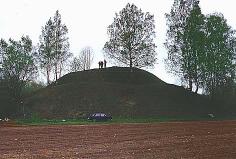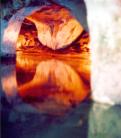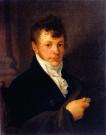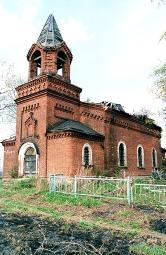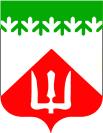Articles
/
Oleg's grave, a tumulus
Oleg's grave, a tumulus
Subject /
Relics
The burial of Oleg is a tumulus in Staraya Ladoga Village. The chronicle legend about the death of Prince Oleg (he died in AD 912) connects the place of his burial with Ladoga. In the vicinity of the mound there are known three necropolises included 10-12 mounds. Ladoga Lake region populatuon called the monumental mound in Sopki, the terrain feature, on the Volkhov River high left bank to the south fron the settlement as Oleg's grave. The mound high is more then 5 metres, the diameter is more then 30 metres. In the past there was the triangular boulder laying around the mound foot. In the 1820s Z. Dolengo-Khodakovsky did excavations of the mound top part and found remains of cremation and a petiolar two-spike spear-head of the 8th - middle 9th centuries. Great sizes, massive stone constructions, meagre finds of the archaeological site demonstrate its similarity with "king's" barrows of Uppsala (Sweden). The mound was constructed before the death of Oleg, but it could be the place where the Prince did sacred rituals. After excavations the mound was called "Polaya Sopka" ("Hollow Mound").
Authors
Plotkin, Konstantin Moiseyevich
Persons
Dolengo-Khodakovsky, Zorian (Adam Charnotsky)
Oleg, Prince
Geography
Topographical landmarks/Ladoga Lake
Leningrad Oblast, the/Volkhov District/Staraya Ladoga Village
Topographical landmarks/Volkhov River, the
Bibliography
Лебедев Г. С., Жвиташвили Ю. Б. Дракон «Нево» на Пути из Варяг в Греки: Археол.-навигац. исследование древних водных коммуникаций между Балтикой и Средиземноморьем. СПб., 1999., С.116-118
Кузьмин С.Л. Сопки нижнего Поволховья: взгляд на проблему на исходе ХХ века // Раннесредневековые древности Северной Руси и ее соседей. СПб. 1999., С.97
Subject Index
Hollow mound
Mentioned in articles:
|
hidden
|
Culture of Mounds
The Culture of Mounds. Mounds are high steep-side hills with the flat top and with the circle made of boulders at the foot. The area of the mound culture include basins of Ilmen Lake, the Msta, Volkhov, Luga rivers. There are mounds in the Luga,... more
|
|
|
|
hidden
|
Dolengo-Khodakovsky, Zorian (Adam Charnotsky) (1784-1825), a scientist
Dolengo-Khodakovsky, Zorian (the real name is Adam Charnotsky) (1784-1825), a Polish archaeologist, a founder of the scientific Slavonic philology, a researcher and expert on Slav antiquities. In 1811 he joined the army of Napoleon and participated... more
|
|
|
hidden
|
Staraya Ladoga, Village
STARAYA LADOGA (Ladoga before 1704), a village in Volkhov District. Population: 2200. Located on the left bank of the Volkhov River where the Ladozhka (Yelena) River flows into it. The toponym is of a Baltic Finnish origin, from Alodejogi (lower... more
|
|
|
|
hidden
|
Tomilov, Aleksey Romanovich (1779- 1848), landlord
TOMILOV, Aleksey Romanovich (1779–1848, Uspenskoye Village , Novaya Ladoga Uyezd), artillery officer, amateur painter, patron of the arts. In 1799 he supervised fortification works in Kronshtadt Town. In 1808 he resigned. During the 1812 War with... more
|
|
|
|
hidden
|
Volkhov District
VOLKHOV DISTRICT, a part of Leningrad Oblast. Area: 5124 sq. km, population: 97,300. Established in 1927. Adm. center: Volkhov Town. V. D. comprises the towns of Syasstroy and Novaya Ladoga, and 277 rural localities. Located south of Lake Ladoga on... more
|
|
|
|
hidden
|
Volkhov District coat of arms and flag, the
The Volkhov District's coat of arms and flag are the official approved symbols of the Municipal Union “Volhovskiy rayon” (the Volkhov District) (the coat of arms was approved with the decision of the Representative Assembly of the Municipal Union... more
|
|
|
|




